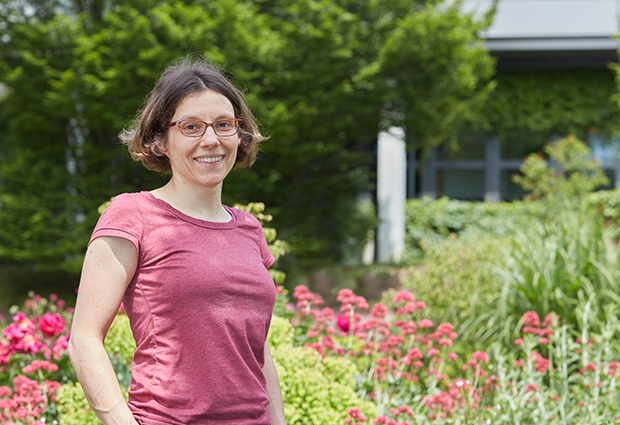
Welcome: Simone Köhler
Which of our genes will be passed on to our children? Simone Köhler wants to find out

Simone Köhler will join EMBL Heidelberg in June as a group leader in the Cell Biology and Biophysics Unit. Using state-of-the-art microscopy and genome-editing techniques, she will research how chromosomes interact with each other to form the DNA within germ cells – the precursors to sperm or egg cells.
Please describe your research in a nutshell.
I’m interested in meiosis, which is a very specialised cell division process. Typically, during cell division, you want to make two genetically identical daughter cells, but with meiosis you want to produce germ cells. These have only half as many chromosomes as the other cells in our bodies, which are known as somatic cells. This means that after germ cells from two individuals combine, there are a full diploid set of chromosomes again.
I’m particularly interested in finding out how chromosomes initially pair, are held together, and exchange genes with each other during a process known as crossover formation. There’s a really fascinating structure called the synaptonemal complex that is involved in this process. During my postdoctoral fellowship I figured out that the synaptonemal complex reorganises its structure and that this is essential for crossover formation. Now I want to understand what else is regulated by this complex during meiosis – and how.
How did you become interested in this topic?
During my PhD I researched how a combination of proteins can create an active network that is highly dynamic and constantly remodelled. This network is known as an active actin network and forms the dynamic scaffold inside cells. Once I’d come to the end of this project, I really wanted to change fields dramatically and I started looking around at different research areas to see what else could be interesting. I saw some images of meiotic nuclei and they were fascinating to me – that’s what initially drew me to this field. What inspires me is knowing that there’s so much more to learn. We still have no idea how the chromosomes initially find each other or how crossover formation is regulated. I think it’s amazing how little we understand about meiosis, even though we’ve known about the concept for such a long time.

What sort of skills are you looking for in your lab?
I really like using a very wide range of techniques so I’m open to people from most academic backgrounds. This is probably because I changed fields pretty drastically myself, so I’m very open to others doing the same thing. I think it really helps if you have a diverse background knowledge so I’m looking for a group that can bring in ideas from different perspectives.
What’s your philosophy for running a lab?
Stay curious and try things out. When I come up with a new idea, I do a quick experiment just to see where it goes. When I get a result that’s really exciting, that opens up so many more questions for me. The day-to-day work in the lab really gives me a lot of new ideas.
Who would you like to work with at EMBL?
Literally almost any group at EMBL! That’s the reason why I’m so excited to come here – there are so many scientists I could collaborate with who are studying nuclear and chromatin organisation. The microscopy facilities are really great at EMBL too.
What’s the best advice that you’ve received?
Present your research well: talk about your work and be proactive. Sometimes that can be really difficult, as I like to be in the lab doing experiments, but that’s not good enough. When you talk about your research, that’s where you really learn a lot and you can get so much great input from others.


